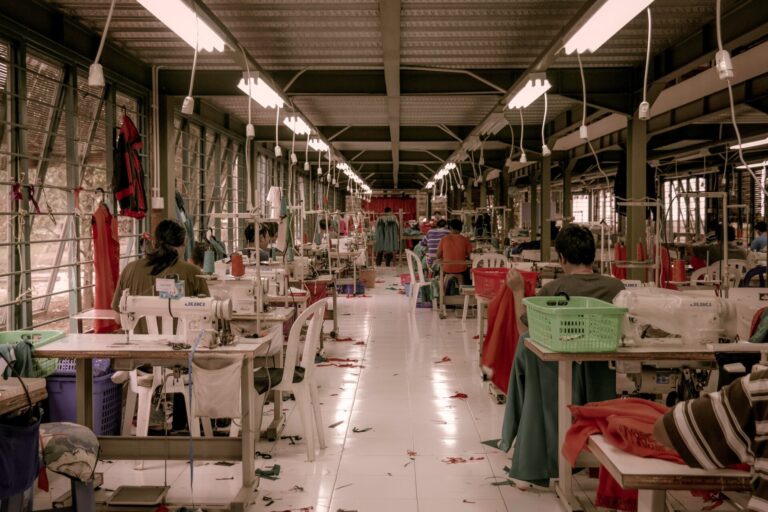A few years ago, travel meant something entirely different to me. I’d plan trips around bucket-list destinations, Instagram-worthy moments, and the best local dishes. But somewhere along the way—perhaps after witnessing plastic waste washing up on a pristine beach, or hearing stories from locals about how mass tourism had changed their neighborhoods—I started asking different questions. Not just where should I go, but how should I travel?
That shift in perspective led me to sustainable tourism, a concept that’s reshaping how conscious travelers around the world approach their journeys. If you’ve heard the term but aren’t quite sure what it means in practice, or if you’re simply looking for concrete ways to make your next trip more meaningful and less harmful, this guide is for you.
Understanding Sustainable Tourism: More Than a Buzzword
Sustainable tourism isn’t about sacrificing comfort or adventure. It’s about traveling in a way that considers the long-term health of the places we visit—environmentally, socially, and economically. According to the United Nations World Tourism Organization (UNWTO), sustainable tourism should meet the needs of travelers and host communities while protecting and enhancing opportunities for the future.
Here’s what makes it different: sustainable tourism isn’t a specific type of trip—it’s an approach that applies to all travel. Whether you’re backpacking through mountain villages, staying at a five-star resort, or taking a weekend city break, your choices matter.
The Three Pillars of Sustainable Tourism
To truly understand responsible travel, it helps to break it down into three interconnected dimensions:
- Environmental Protection – Minimizing resource consumption, protecting biodiversity, and reducing pollution. Tourism contributes significantly to global carbon emissions, so choosing lower-impact options is essential.
- Social and Cultural Respect – Honoring the traditions, heritage, and daily lives of local communities. This means ensuring tourism doesn’t disrupt essential services or exploit vulnerable populations.
- Economic Fairness – Making sure tourism revenue reaches local people and small businesses, not just international corporations. When done right, tourism can reduce poverty and create meaningful employment.
These three pillars work together. An eco-lodge that protects the rainforest but employs only foreign managers misses the mark. A culturally immersive tour that ignores environmental damage isn’t truly sustainable.
Sustainable Tourism vs. Ecotourism: What’s the Difference?
You might have also heard the term “ecotourism” and wondered how it relates. While ecotourism focuses specifically on nature-based travel with conservation and education at its core, sustainable tourism is broader. Think of ecotourism as one branch of the sustainable tourism tree—a specialized approach that can be applied to any destination or travel style, from urban explorations to beach getaways.
Planning Your Trip: Start With Intention
Sustainable travel begins before you even pack your bags. Here’s what to look for when planning:
Choose Certified Accommodations
Don’t be swayed by vague “eco-friendly” marketing. Look for third-party certifications like GSTC (Global Sustainable Tourism Council), which ensures properties meet rigorous standards across environmental impact, cultural respect, and economic contribution. Other trustworthy labels include Green Key, Green Globe, and Biosphere.
When browsing accommodations, dig deeper: Do they use renewable energy? Have they set water conservation goals? Do they support local suppliers and provide fair employment opportunities?
Rethink Your Transportation
Transportation is one of travel’s biggest carbon contributors. Whenever possible, opt for trains over planes, use public transit at your destination, or rent bicycles. Not only does this reduce emissions, but it often leads to more authentic experiences—you’ll see neighborhoods and interact with locals in ways you’d miss from a taxi window.
Support Local Economies
Prioritize locally-owned guesthouses, restaurants, and tour operators. This ensures your spending directly benefits the community rather than funneling profits to distant shareholders. Plus, family-run establishments often provide the most memorable experiences—the kind of conversations over homemade meals that stay with you long after you’ve returned home.
Packing With Purpose: The Foundation of Eco-Friendly Travel
What you bring matters almost as much as where you go. Here are essentials for any sustainable traveler:
- Reusable water bottle – Avoid buying endless plastic bottles
- Collapsible shopping bag – Perfect for markets and impromptu purchases
- Solid toiletries – Shampoo bars and soap eliminate plastic packaging
- Reusable utensils and containers – Say no to single-use plastics
The principle is simple: pack light, pack reusable, and pack items that help you avoid creating waste at your destination.
At Your Destination: Small Actions, Big Impact
Once you arrive, sustainable tourism comes down to daily choices:
Reduce Your Environmental Footprint
Turn off lights, air conditioning, and electronics when leaving your room. In water-scarce regions, be especially mindful of your consumption—shorter showers, reusing towels, and skipping daily linen changes all help.
Respect Wildlife and Natural Spaces
Never feed wild animals, avoid attractions that exploit animals (elephant rides, dolphin shows), and refuse to purchase products made from endangered species. When visiting nature reserves, follow all guidelines about group sizes, designated trails, and photography restrictions.
Honor Local Culture
Research cultural norms before visiting sacred sites or residential neighborhoods. Dress appropriately, ask permission before photographing people, and seek authentic cultural experiences rather than staged performances created solely for tourists. Remember, genuine cultural exchange happens when communities willingly share their traditions with respectful visitors.
Tackling Overtourism: Travel Smarter, Not Just More
One of sustainable tourism’s biggest challenges is overtourism—when destinations become so overwhelmed with visitors that both the environment and local quality of life suffer. You can help by:
- Traveling during off-peak seasons – You’ll find better prices, smaller crowds, and a more relaxed atmosphere
- Exploring lesser-known destinations – Instead of only visiting famous landmarks, venture into surrounding areas where your presence and spending can make a real difference
- Staying longer in fewer places – Slow travel reduces transportation emissions and allows deeper community connections
The Hidden Wealth: What Sustainable Travel Gives Back
When I reflect on my most treasured travel memories, they’re never about the luxury hotel or the famous monument. They’re about the elderly woman who taught me to make traditional pottery. The market vendor who shared stories about his family’s farm. The sunset hike with a local guide who pointed out medicinal plants his grandmother used.
Sustainable tourism creates these moments. By slowing down, spending locally, and engaging respectfully, you open doors to genuine human connection. You return home not just with photos, but with stories, perspectives, and relationships that enrich your understanding of the world.
Meanwhile, your choices leave a positive legacy. Your spending supports a family’s livelihood. Your respect for cultural sites helps preserve them for future generations. Your light environmental footprint means that pristine beach or mountain valley remains beautiful.
The Future of Travel Is Sustainable
Climate change, environmental degradation, and cultural erosion aren’t abstract problems—they’re already affecting the places we love to visit. Sustainable tourism isn’t a niche interest for ultra-committed environmentalists anymore. It’s becoming the baseline expectation, the new normal for responsible adults who travel.
The good news? Sustainable travel doesn’t mean sacrificing joy, comfort, or adventure. Often, it leads to richer, more meaningful experiences than conventional tourism ever could. When you choose a locally-owned guesthouse over a chain hotel, you’re not just making an ethical choice—you’re choosing personalized hospitality and insider knowledge. When you explore on foot or by bicycle, you’re not just reducing emissions—you’re discovering hidden corners and spontaneous encounters.
Your Next Journey Starts Now
Sustainable tourism can feel overwhelming at first—there’s so much to consider, so many ways our choices ripple outward. But start small. On your next trip, pick just two or three practices from this guide. Bring a reusable water bottle. Eat at locally-owned restaurants. Turn off the air conditioning when you leave.
As these habits become second nature, you’ll find yourself naturally seeking out more sustainable options, asking better questions, and traveling with greater awareness. And you’ll discover something beautiful: that mindful travel doesn’t diminish the joy of exploration—it deepens it.
The places we cherish—their landscapes, cultures, and communities—will only remain vibrant if we treat them with care. So let’s travel not just to take, but to give. Not just to see, but to understand. Not just for today, but for all the tomorrows ahead.








